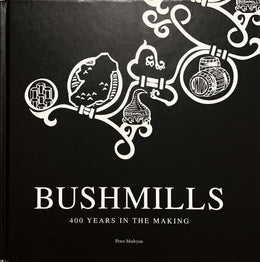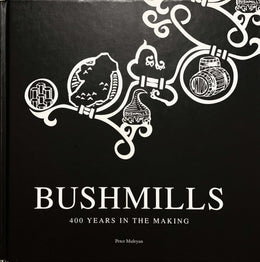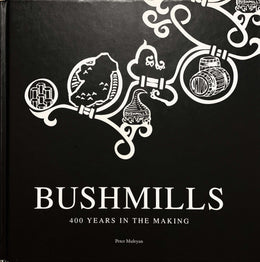Chapter 6: The Pawning of Orkney; "Orkney Stories: A specially commissioned collection by Highland Park”

The most southerly of the Orkney Islands lies just six miles or so from the Scottish mainland. But for centuries the islands were part of the kingdom of Norway. The year 1468, however, saw the culmination of a remarkable series of diplomatic negotiations which resulted in Orkney being pawned to the Scottish crown, never to be reclaimed.
Europe in the later fifteenth century was a continent in growing ferment. Across its jigsaw pattern of kingdoms, there was a sense of restlessness and impatience. There was greater wealth, and an urge to display it. In Italy, the ideas of the Renaissance were introducing a more civilised style of life, and spreading rapidly North and West. In the Atlantic kingdoms, men stared with a new intensity of speculation towards the Western horizon and the worlds that might lie beyond it. Within the countries of Europe, there was a sense of nationality, and with that awareness went rivalry, the ambition to outshine, to be admired, to conquer. It was an age when kings still led their armies, and knights still jousted in tournament. The urge to keep, or extend, power underlay all the activity, but fame and honour were the means of displaying it. Prestige was more important than riches.
Even the countries out on Europe's rim felt the impact of this restlessness. The past was a dark tunnel, the future was full of glittering potential. In 1468 Scotland had a clever young king, James III, only seventeen but reaching out for the reins of control. Under the bright red and gold heraldry of the Lyon, the country was making progress in the arts and in law, in medical as well as in military science. Scotland wanted to be noticed, to be accepted as a European kingdom. Across the North Sea, the three Scandinavian kingdoms of Denmark, Norway and Sweden were united under a single crown; their monarch, King Christian I, a seasoned veteran compared with the youthful James, ruled from Copenhagen.
Between Scotland and Denmark there was unfinished business from that increasingly remote past. For more than three hundred years, ever since the Viking invasions, the Western and the Northern Isles had been fiefs of the Norwegian king. The Western Isles had been won back by a mixture of warfare and cash, but Scotland was still bound to pay Norway an annual rental. This was a modest sum, but the attached penalties for non-payment were much greater. Scotland had not paid for decades, and now owed the kingdom of Norway half a million marks. It was a colossal amount. And Christian, despite his wide realms, was chronically short of money. If the Scottish debt were to be paid off, his fortunes would be transformed.

The Scottish point of view was different. They did not see why they should pay sums of money set by an almost-forgotten treaty. Their historians told them that in the centuries before the Vikings came, the Orkneys and Shetland were part of the Pictish kingdom. Why pay the usurper for what was rightfully theirs? And now the debt had become so vast that payment was impossible; Scotland, now so hopefully flourishing, would be beggared.
Orkney was Norwegian, but already showing many signs of Scottish influence. Its Earl, William St Clair, was a Scot, but he owed homage to King Christian for his lands. Its Bishop, William Tulloch, was another Scot, but his superior was the Archbishop of Trondheim. The islanders, descendants of the Norsemen, spoke the Norn tongue and followed their tradition- al ways of farming and fishing through the seasons.
King Christian had made a first attempt to have the debt repaid during the reign of James II. When that king was blown up by one of his own new cannons, the claim went into abeyance. But in 1468, Christian renewed it. Previously he had made threats, this time he announced his friendship and esteem for the King of Scots. The Scottish government saw its opportunity and seized the moment. For some time it had been considering the question of securing a suitable Queen for James. A Scottish bride would not do: the Stewart kings had learned painfully not to get too close to the barons of their own country. In the prevailing anti-English climate, an English Queen was out of the question. The choice had to be made in Europe. The Scottish Parliament met and appointed a commission to visit the continent in search of a suitable bride. There were many eligible princesses in Europe. But one of them was Christian's daughter, Margaret, and once formed, the delegation went straight to Copenhagen.
It was a high-calibre group, led by the Chancellor, Lord Avondale, a senior member of the house of Douglas. Among the others were Lord Arran, of the powerful Boyd family, and the Bishops of Glasgow and Orkney. Conspicuously missing was William St Clair. He was in bad odour with King Christian, having ignored many invitations to attend the Danish court, and his arrogantly independent style was not appreciated in Scotland either.
The mission to Copenhagenwas a triumphant success. At the end of the negotiations an astonishing settlement was announced. The young Princess of Denmark would marry the young King of Scotland. She would bring with her a vast dowry, 60,000 Rhenish florins. But in addition to that, the payments to Norway were annulled forever, and the vast accumulated debt completely written off. Even that was not the master-stroke. King Christian's difficulties in raising cash from his turbulent and rebellious provinces were well-known. He offered a down-payment on the dowry, of two thousand florins. Avondale and his team accepted this, but required some security against the remainder. It was arranged that the Orkney Islands would be pledged against payment of the balance.
It was not the first time that Christian had pawned part of his dominions. It is likely he had serious thoughts of finding the money, or re-negotiating the terms at a later date. But the Scots had what they had come for. They had a Queen, and they had Orkney.
Both sides were well-content. Honour had been satisfied. In terms of prestige, the treaty dispersed it generously to both sides. King Christian had given his daughter away to a splendid match, and the size of her dowry rang round Europe. He had a treaty of friendship with Scotland, a country strategically placed and growing in power. Orkney was lost to him for the present but in time he would reclaim it. From the Scottish point of view, King James had acquired a worthy bride, had cast away the millstone of the "Norway annuals", and had pushed his frontiers out towards their ancient limits. In fact, his future father-in-law found even the downpayment impossible to find, and added Shetland to the pledge, to cover the full amount of the dowry. The satisfaction in Scotland could not have been greater.
Although the pledge was open-ended, with no set redemption date, within two years the Scottish government had moved in to turn the islands into a province of Scotland. Promises to maintain their traditional laws and customs were ignored. The St Clairs resigned the earldom and the way was opened for the Stewart Earls, who ruled Orkney as a private kingdom. The beautiful and peaceful ruins of their palace in Kirkwall form an ironic memorial to their harsh reign. But the resilient and resourceful spirit of the islanders survived into a new prosperity, and the islands' traditions, speech and culture remain distinctive, and proudly defended, to the present day.
Written by David Ross
The text is an excerpt from "Orkney Stories: A specially commissioned collection by Highland Park" (pp. 37 - 40), published 1995 by Matthew Gloag & Son Limited under the commission of Highland Park Single Malt Scotch Whisky.







